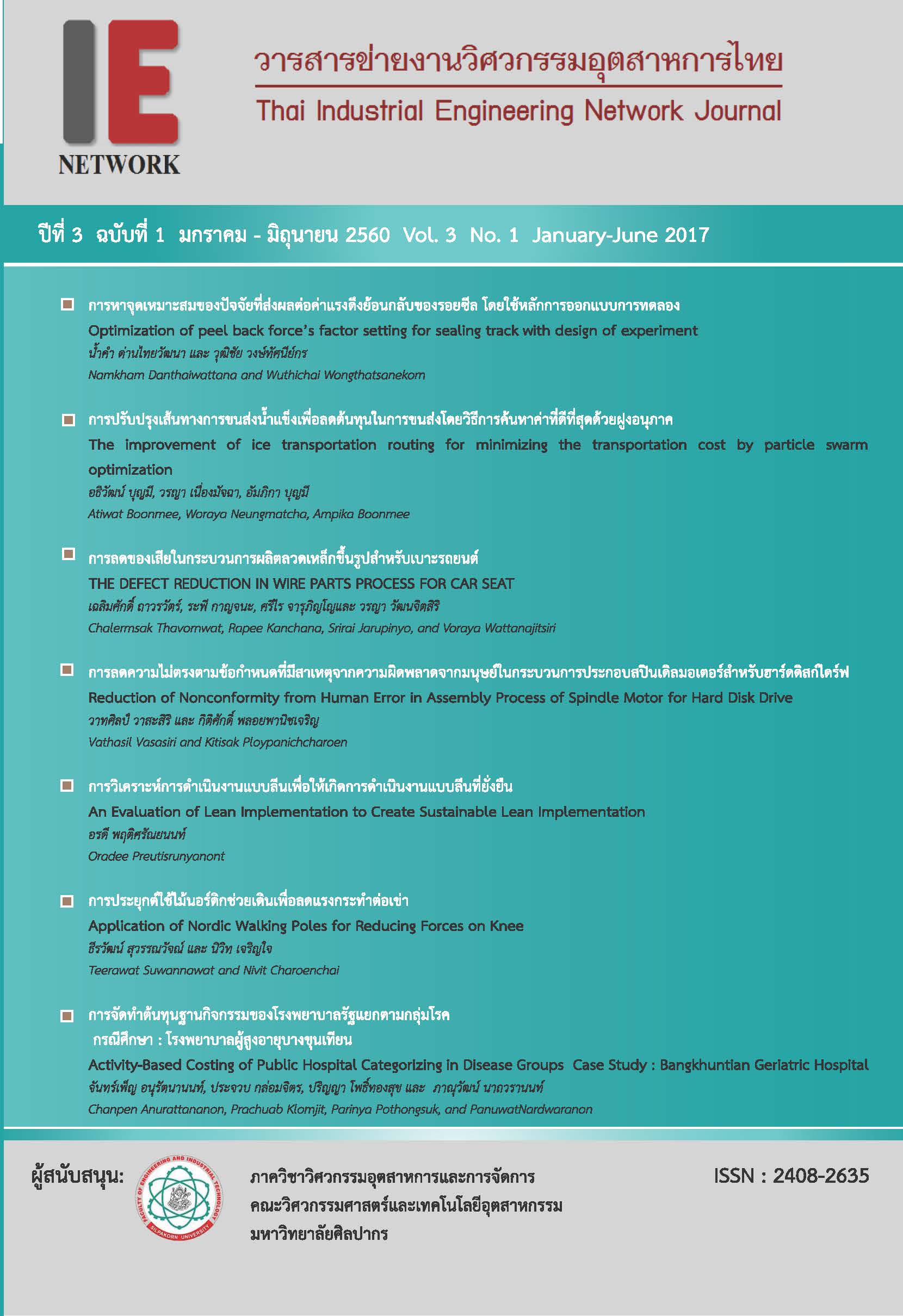Abrasive Wear Behavior of Stellite12 Hard facing Electrode in GMAW Process
Main Article Content
Abstract
In this study, the effect of normal load and rolling-sliding distance on abrasive wear resistance of the Stellite12 hardfacing alloy with a chemical composition of Co-30Cr-8.5W-1.5C (at.%) by Gas Metal arc welding process was investigated. The welding parameters were wire feed speed of 67.7 mm/s and travel speed of 4.2 mm/s with the argon flow rate of 19 L/min. The phase distribution and shape of microstructure on hard facing layers was observed by scanning electron microscope (SEM), identified phase type by X-ray diffraction technique. It was found that the microstructure of hard facing alloy consist of dendritic (Co-rich Solid Solution: ICDD: 04-006-4263) and interdendritic region which is the mixer of solid solution and carbide precipitation (Cr3C2 : ICDD: 00-035-0804). The hardness of hard facing layer was carried out by Rockwell hardness test, were in the range of 42.6 to 51.6 HRC. Abrasive wear resistance was performed on Pin-on-Disk apparatus with the normal load of 1.5, 3.5, 5.5 and 15kg and rolling-sliding distance of 1, 2 and 3 km. Moreover, the abrasive resistance were assessed by the mass loss of sample by using an electronic balance with the resolution of 0.0001g. Wear scars were observed by optical microscope (OM). It was found that the rate of wear was increased with increasing the normal load or rolling-sliding distance. The wear scars were showed adhesive and abrasive wear mechanism which occurs on initial period. When the rolling-sliding distance increased, the fatigue of surface occurred cause by the cyclic stress.
Article Details
บทความ ข้อมูล เนื้อหา รูปภาพ ฯลฯ ที่ได้รับการตีพิมพ์ในวารสารฯ ถือเป็นลิขสิทธิ์ของวารสารฯ หากบุคคลหรือหน่วยงานใดต้องการนำทั้งหมดหรือส่วนหนึ่งส่วนใดไปเผยแพร่ต่อหรือเพื่อกระทำการใดๆ จะได้รับอนุญาต แต่ห้ามนำไปใช้เพื่่อประโยชน์ทางธุรกิจ และห้ามดัดแปลง
References
[2] H. Yu, R. Ahmed, H. de Villiers Lovelock, and S. Davies, “Tribo-Mechanical Evaluation of Cobalt-Based (Stellite4) Alloys Manufactured via HIPing and Casting,” Proceedings of the World Congress on Engineering 2007 Vol II July 2 - 4,
[3] P. Crook, “Cobalt and cobalt alloys,” ASM Handbook, vol. 2, 1991, pp.446-454.
[4] P. Crook, “Cobalt-base alloys resist wear, corrosion, and heat,” Advanced Materials & Progress, vol. 145, 1994, pp. 27-30.
[5] D. L. Klarstrom, “Wrought cobalt-base superalloys,” Journal of Materials Engineering and Performance, vol. 2, 1993, pp. 523-530.
[6] asm metal handbook Vol.6 , Properties and Selection Nonferrous Alloys and Special-Purpose Material p 1411.
[7] K. C. Antony, “Wear-resistant cobalt-based alloys,” Journal of Metals, vol. 35, 1983, pp. 52-60
[8] A. Frenk, W. Kurz, “Microstructural effects on the sliding wear resistance of a cobalt-based alloy,” Wear, vol. 174, 1994, pp. 81-91.

